Existing System:
In traditional method the abnormality in any of the parameters are transmitted through wireless communication to intimate the status to monitoring section without giving any voice alert to the workers inside the mine. Hence we go for the proposed system.
OBJECTIVE
Circuit Working

Fig. 1: Flow Chart of Zigbee based Transmitter Device for Mine Workers
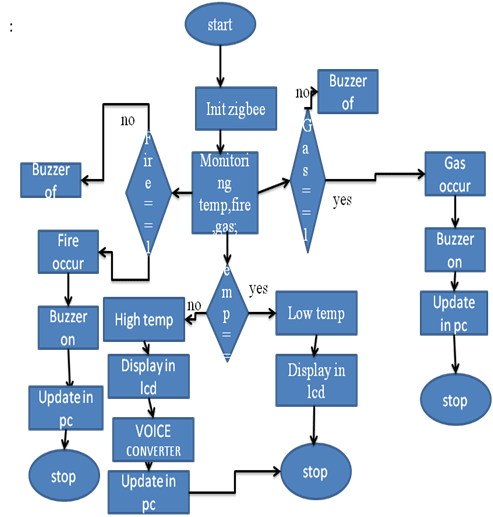
Fig. 2: Flow Chart of Zigbee based Receiver Device for Mine Workers
Hardware Design
3.1 BLOCK DIAGRAM
TRANSMITTER
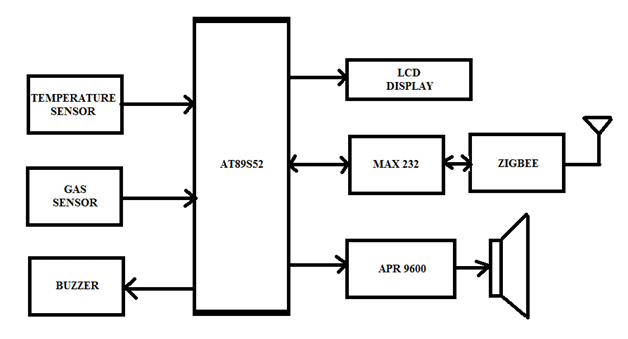
Fig. 3: Block Diagram of Zigbee based Transmitter Device for Mine Workers
The controlling device of the whole system is a micro controller. Whenever there is a change in analog parameters like temperature sensor and smoke sensor it’s converted into digital data which is given to the microcontroller. The given data is accordingly displayed on LCD and converted into voice by using text to voice converter and intimated through voice in speakers inside mines.

Fig. 4: Block Diagram of Zigbee based Receiver Device for Mine Workers
At that time LCD data is updated in PC through serial communication. Whenever the information passes through pc to mines a zigbee module is used and it is monitored by using wireless camera. The micro controllers used in the project are programmed using embedded C language. The data such as temp high, smoke high, normal situation, etc, are connected to the port0. At that time LCD data is converted into voice through APR9600 and connected to the speakers.
Alerting System
ALERTING SYSTEM FOR MINE WORKERS

Fig. 5: Prototype of Zigbee based Emergency Alert System for Mine Workers
The information can be updated in pc by using zigbee module. It is connected by using MAX232, and the message is displayed on pc. If temperature goes high, the buzzer is switched ON, otherwise the condition is normal. When we send the message inside mines through pc, it can be displayed on the LCD and intimated through voice.
Result & Conclusion
RESULTS
The project “ZIGBEE BASED ALERTING SYSTEM FOR MINE WORERS” was designed and Implemented using a hardware kit. The status of the kit was updated through a computer wirelessly using zigbee and the outputs can also be updated by PC through the hyper terminal inside mines.
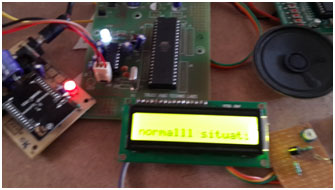
Fig. 6: Image of Zigbee based Emergency Alert System for Mine Workers in action

Fig. 7: Image showing Low Temperature Alert on Receiver Device of Mines Emergency System

Fig. 8: Image showing High Temperature Alert on Receiver Device of Mines Emergency System
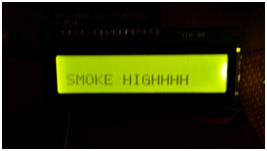
Fig. 9: Image showing High Smoke Alert on Receiver Device of Mines Emergency System
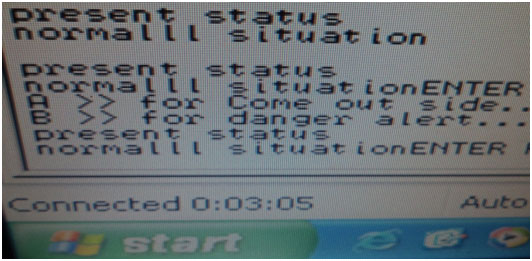
Fig. 10: Image of Terminal Application on Windows showing connection with the Receiver Device of Mines Emergency System
CONCLUSION
FUTURE SCOPE
Project Source Code
### #include <REGX51.H> #include<lcd.h> sbit temp=P1^0; sbit smoke=P1^1; sbit voice1=P1^2; sbit voice2=P1^3; sbit voice3=P1^4; sbit voice4=P1^5; void serial() { TMOD=0x20; SCON=0x50; TH1=0XFD; TR1=1; } void serial_string(unsigned char ch[]) { int i; for(i=0;ch[i]!='�';i++) { SBUF=ch[i]; while(TI==0); TI=0; } } void enter (void) { SBUF=13; // Enter ASC values are 13 and 10, while(TI==0); // After sending commands to GSM modem you must be send Enter's ASC values. TI=0; SBUF=10; while(TI==0); TI=0; } void main() { unsigned char y; lcd_init(); serial(); lcd_string("MINE WORKERRRRRRR"); temp=1; smoke=1; delay(100); serial_string("ENTER FOLLOWING COMMANDS"); delay(100); enter(); serial_string("A >> for Come out side..."); delay(100); enter(); serial_string("B >> for danger alert...."); delay(100); while(1) { xx: enter(); y=SBUF; RI=0; delay(100); if(y=='A') { voice4=1; voice3=0; lcd_cmd(0x01); lcd_cmd(0xc0); lcd_string("come out side"); delay(500); goto yy; } if(y=='B') { voice4=0; voice3=1; lcd_cmd(0x01); lcd_cmd(0xc0); lcd_string("danger alert"); delay(500); goto yy; } else { voice3=1; voice4=1; } yy: lcd_cmd(0x01); lcd_cmd(0x80); lcd_string("present statusss"); delay(20); serial_string("present status"); delay(100); enter(); if(temp==0) { voice1=0; lcd_cmd(0x01); lcd_cmd(0xc0); lcd_string("TEMPERATURE HIGHHHH"); delay(20); serial_string("temperature highhh"); delay(500); enter(); goto xx; } if(smoke==0) { voice2=0; lcd_cmd(0x01); lcd_cmd(0xc0); lcd_string("SMOKE HIGHHHH"); delay(20); serial_string("SMOKE highhh"); delay(500); enter(); goto xx; } else { voice1=1; voice2=1; lcd_cmd(0x01); lcd_cmd(0xc0); lcd_string("normalll situation"); delay(20); serial_string("normalll situation"); delay(500); enter(); goto xx; } } } lcd.h #ifndef _LCD_H #define _LCD_H #define data1 P2 #define rs P3_7 #define rw P3_6 #define en P3_5 void delay(unsigned int t) { unsigned int a,b; for(a=0;a<t;a++) for(b=0;b<1275;b++); } void lcd_cmd(unsigned char ch) { data1=ch; rs=0; rw=0; en=1; delay(2); en=0; } void lcd_data(unsigned char ch) { data1=ch; rs=1; rw=0; en=1; delay(2); en=0; } void lcd_string(unsigned char *ch) { unsigned char i=0; while(ch[i]!='�') { lcd_data(ch[i]); //lcd_cmd(0x06); i++; } } void lcd_string_loc(unsigned char cmd,unsigned char *ch) { unsigned char i=0; lcd_cmd(cmd); while(ch[i]!='�') { lcd_data(ch[i]); lcd_cmd(0x06); i++; } } void lcd_init() { // data1=0x00; // rs=0; // rw=0; // en=0; lcd_cmd(0x38); delay(10); lcd_cmd(0x01); delay(10); lcd_cmd(0x06); delay(10); lcd_cmd(0x0c); delay(10); lcd_cmd(0x80); delay(10); } #endif ###
Circuit Diagrams
Project Video
Filed Under: Electronic Projects
Filed Under: Electronic Projects



Questions related to this article?
👉Ask and discuss on Electro-Tech-Online.com and EDAboard.com forums.
Tell Us What You Think!!
You must be logged in to post a comment.